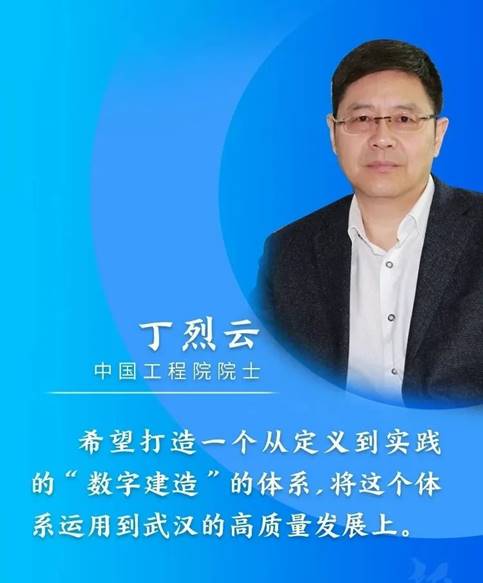The 9th Plenary Session of the 13th CPC Wuhan Municipal Committee has outlined the action plan for academicians to lead the development of high-end industries.
During an exclusive interview on June 29, Academician Ding Lieyun from the School of Civil and Hydraulic Engineering of Huazhong University of Science and Technology and other academicians in Wuhan, including Liu Jingnan, Xie Xianqi, Yu Shaohua and Jiang Desheng, told the reporter of Changjiang Daily that they would give full play to the leading role of academicians and continue their efforts in the cutting-edge scientific researches to promote the local conversion rate of scientific and technological achievements, boost the organic combination of production, learning and research, help Wuhan Municipality transform science and education resources into high-quality development resources, and innovation advantages into high-quality development advantages, thus finally achieving high-quality development.

Creating “Digital Construction” system to help Wuhan Municipality for high-quality development
Recently, Academician Ding Lieyun from the School of Civil and Hydraulic Engineering is leading his team to study "digital construction". Academician Ding hopes to create a "digital construction" system covering every step from definition to practice, and apply this system to the high-quality development of Wuhan.
In Academician Ding’s view, “Constructed in China” and “Made in China” serve as two significant drives for the economic development of China since reform and opening-up. “Constructed in China” involves urban constructions, bridges, tunnels and so on. Renowned as the capital of design, Wuhan, which is different from Beijing and Shanghai, boasts engineering designs. China plays a core role in the field of global bridge design while most bridge designs in China originate from Wuhan.
Looking farther forward to the year 2035, “Constructed in China” will absolutely introduce digital economy into the construction industry, said Academician Ding. For example, Beijing Daxing International Airport and Shanghai Tower have promoted the level of construction industry and created the miracle of construction by virtue of digital technology. Digital infrastructure is the feature of “new infrastructure” while physical infrastructure is the feature of “traditional infrastructure”. Promoting “new infrastructure” means efforts should be made to develop digital industry in the field of “traditional infrastructure”. It involves intelligent construction, intelligent building, intelligent infrastructure, intelligent engineering machinery and other aspects to solve the problem that “new infrastructure” does not have sufficient application scenarios and modes. “New infrastructure” helps emerging technologies create application scenarios, thus posing a huge potential. Each application scenario will bring about a new industry and this new industry will offer many new jobs. For example, 5G technology has provided the infrastructure for high-speed interconnection. Relying on it, some new industries, such as online medical service and online education, have achieved fast development. In addition, intelligent technologies are recommended for the construction of medical centers for public health emergency of national concern in Wuhan to build intelligent hospitals.
